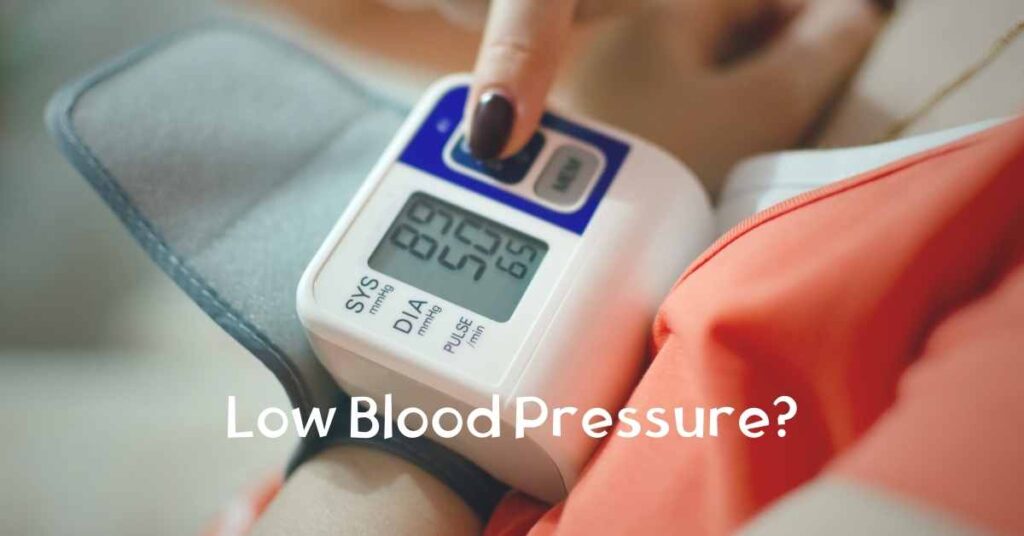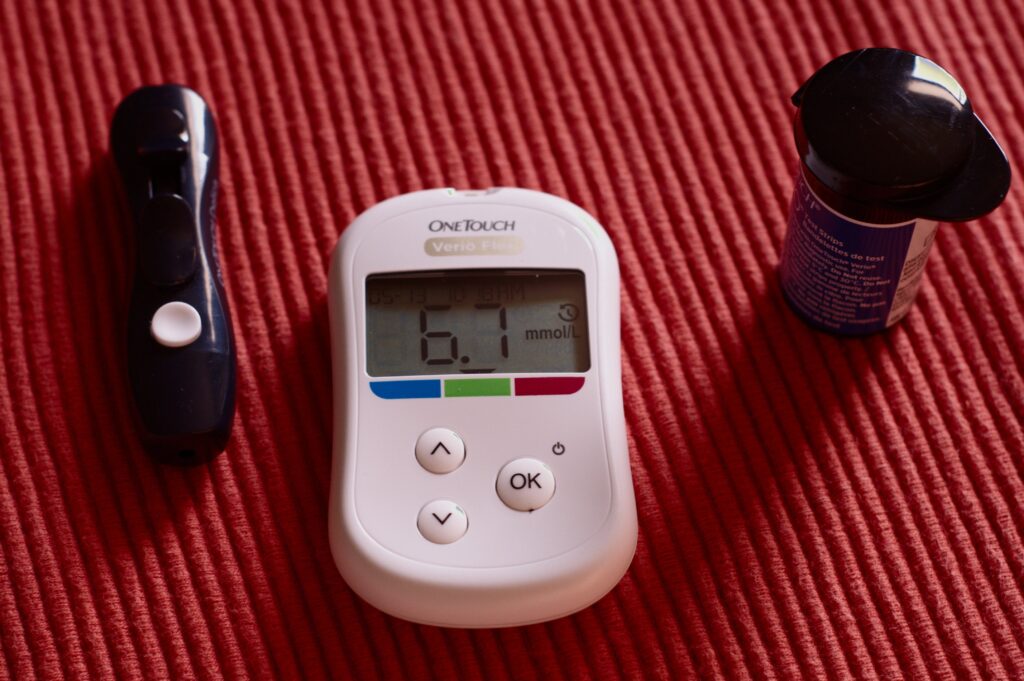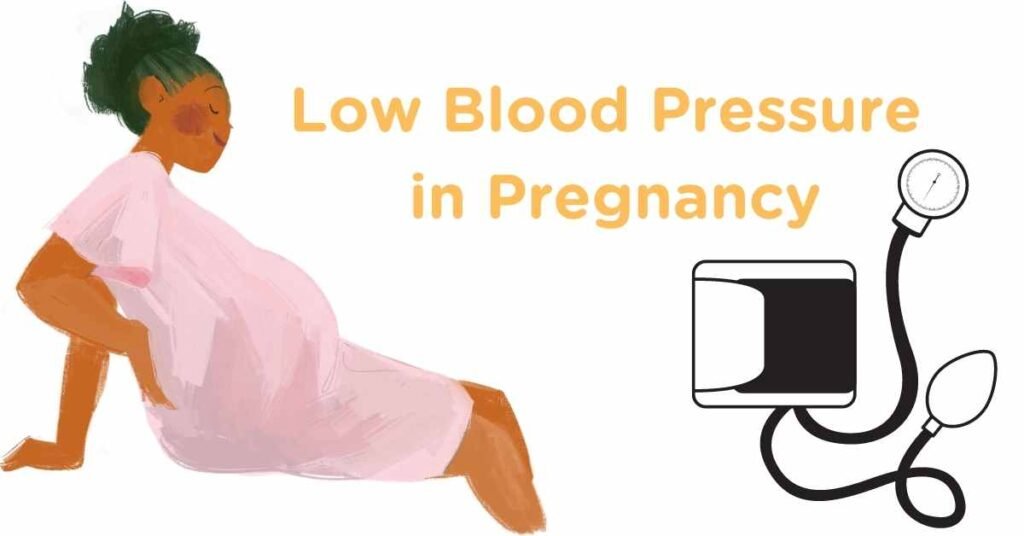Blood pressure impacts our life in a large way, be it high or low. Low blood pressure is a concern just like high blood pressure because both of them can be fatal.
The low blood pressure could be appealing and, for some there are no issues. But for many, excessively low blood pressure (hypotension) may cause fainting and dizziness. In extreme instances, the low blood pressure of a person may be life-threatening. So urgent management is needed.
What is Low Blood Pressure?
Blood pressure levels less than 90 mm of Hg for the top number (systolic) and/or 60 mm of Hg for the bottom number (diastolic) is usually regarded as low blood pressure.
The reasons for low blood pressure could be due to dehydration or serious medical issues. It is essential to determine the reason for the low blood pressure, to ensure that it can be managed. Timely management of low blood pressure can help to avoid future complications.
Low Blood Pressure Symptoms
For certain people who have low blood pressure, it could signal an underlying medical issue, particularly when it is suddenly dropped or is associated with symptoms and signs like
- Lightheadedness or dizziness
- Fainting
- Vision blurred or faded
- A lack of concentration
- Shock
Extreme abnormal Hypotension can cause this life-threatening illness. The symptoms and signs include:
- Confusion, particularly in elderly people
- Cold, clammy, pale skin
- Rapid, shallow breathing
- A weak and fast pulse
When should you see a doctor?
If you are experiencing signs or signs of shock, seek immediate medical assistance.
If you’re constantly experiencing low blood pressure levels but you feel normal, then the doctor may simply monitor you during routine examinations.
Lightheadedness and dizziness can be a fairly minor issue — due to mild dehydrations, as a result of, for example, excessive time outdoors in the sun, or in a hot tub for instance. It’s still important to visit your doctor when you exhibit symptoms or signs for low blood pressure since they could indicate more serious issues. It’s beneficial to keep a record on your symptoms, the time they happen and what you’re doing during the time.
Blood Pressure Factors
Blood pressure is the measurement of the pressure inside your arteries during both the resting and active phases of every heartbeat.
Systolic Pressure-The top number in the blood pressure reading represents what amount of blood pressure that your heart creates while pumping fluid through your blood vessels to the rest of your body.
Diastolic Pressure-The bottom number in the reading of blood pressure refers to the blood pressure in your arteries during the time that your heart is in rest between heart beats.
Current guidelines define normal blood pressure to be less than 120/80 mm Hg
The blood pressure fluctuates during the course of the day based on:
- Body posture
- Breathing rhythm
- Stress level
- Physical condition
- The medications you are taking
- What you eat and drink
- The time of the day
Blood pressure usually is lowest at night and then increases sharply on waking.
Low Blood Pressure: How low can you go?
What is considered to be as low blood pressure in your case could be normal for other people. Many doctors consider blood pressure as too low only when it causes any symptoms.
According to some experts, “low blood pressure” is the reading when systolic blood pressure are lower than 90 mm Hg and/or diastolic blood pressure is lower than 60 mm Hg
If either numbers are below this, your blood pressure is considered lower than normal.
A sudden drop in blood pressure could be risky. Changes of only 20 mm of Hg can be fatal. Such as a decrease from 110 to 90 mm Hg of systolic blood pressure can lead to fainting and dizziness when the brain does not receive sufficient blood. Big drops, like the ones caused by bleeding that is not controlled or severe infections, as well as allergic reactions, may be life-threatening.
Low Blood Pressure Causes
The medical conditions that can lead to low blood pressure are
The time of pregnancy
Because the circulatory system is expanding quickly during pregnancy, the blood pressure is more likely to fall. This is normal and the blood pressure will return to the pre-pregnancy range after the delivery.
Heart issues
Some heart conditions which can cause low blood pressure include extremely low heart rate (bradycardia) and heart valve issues or heart attack, as well as heart failure.
Endocrine or hormonal issues
Parathyroid disease, adrenal insufficiency (Addison’s disease), low levels of blood sugar (hypoglycemia) and in some instances the condition of diabetes can cause low blood pressure.
Dehydration
When your body loses much more fluid than it is taking, then this can result in dizziness, fatigue, and weakness. Vomiting, fever, extreme diarrhea, excessive use of diuretics, and intense exercises can cause dehydration.
Loss of blood
Losing a lot of blood, like an injury that is severe as well as internal bleeding reduces your blood amount inside of the body, resulting in the drastic reduction of the blood pressure.
Severe illness (septicemia)
When an infection of the body enters the bloodstream, it could result in a potentially fatal decrease in blood pressure known as Septic shock. It is a life threatening condition.
A severe allergic reaction (anaphylaxis)
Common causes of this serious and potentially life-threatening reaction are food items, medicines, insect venom, and latex. Anaphylaxis can lead to breathing difficulties and itching, hives, a swollen throat and the blood pressure that drops dangerously.
A lack of nutritional elements in your food
A lack of folate, vitamin B12, and iron could prevent your body from making sufficient red blood cells (anemia) and can cause lower blood pressure.
Certain medications
Certain medications can lead to low blood pressure. These are the following
- Diuretics include furosemide and hydrochlorothiazide
- Alpha blockers, such as prazosin
- Beta blockers, for instance, atenolol and propranolol
- The treatment for Parkinson’s disease includes drugs, like pramipexole or those that contain levodopa
- Certain kinds of antidepressants (tricyclic antidepressants) such as the doxepin as well as imipramine
- Erectile dysfunction drugs, such as sildenafil or tadalafil, especially when taken together with the heart medicine nitroglycerin.
Different types of low blood pressure
Doctors usually divide the low blood pressure (hypotension) into various categories, according to the cause and other factors. Certain types of hypotension are:
Orthostatic or Postural low blood pressure
Low Blood pressure when rising in a standing position is known as orthostatic or postural hypotension. This is an unexpected decrease in blood pressure after you get up from a sitting posture or after lying down.
Gravity causes blood to accumulate within your legs whenever you stand. Normally the body responds by increasing the cardiovascular rate, and by constricting the blood vessels making sure that enough blood flows back to your brain.
In people suffering from orthostatic hypotension the compensating mechanism fails to work and blood pressure decreases which can cause dizziness and lightheadedness. It can also cause blurred vision, and sometimes fainting.
Orthostatic hypotension can be caused by different reasons, such as the effects of dehydration, bed rest for a long time, pregnancy, diabetes, heart issues, burns, extreme heat, large varicose veins as well as some neurological disorders.
A number of medications also can cause orthostatic hypotension, particularly drugs used to treat high blood pressure — diuretics, beta blockers, calcium channel blockers and angiotensin-converting enzyme (ACE) inhibitors — as well as antidepressants and drugs used to treat Parkinson’s disease and erectile dysfunction.
Orthostatic hypotension is a common occurrence among older adults, however it can also be a problem for healthy, young people who stand up suddenly following sitting cross-legged for prolonged duration or after squatting or doing a lot of squatting.
Postprandial low blood pressure
Postprandial hypotension means low blood pressure following a meal. This drop in blood pressure happens between one and two hours after eating, and is most common in older adults.
The blood flows into the digestive tract following a meal that is after we consume food. In normal circumstances, your body increases the heart rate and tightens some blood vessels to keep your blood pressure in check. However, in certain people, the mechanisms fail to work, causing fainting, dizziness, and falls.
Postprandial hypotension can be more common in individuals with high blood pressure, or the disorders of autonomic nervous system, like Parkinson’s disease.
Consuming small meals that are low in carbohydrates as well as drinking more fluids and abstaining from alcohol could reduce the symptoms.
Neurally controlled low blood pressure
Blood pressure drops due to the brain’s malfunctioning signals. This type of low blood pressure is known as neurally controlled hypotension. This disorder is a cause of the blood pressure to drop after prolonged standing, mostly is experienced by children and young adults. It’s thought to result because of a lack of communication between the heart and the brain.
Blood pressure is low as a result of nerve system damage (multiple system atrophy and the orthostatic hypotension). Also called Shy-Drager syndrome. This rare condition is characterized by a variety of Parkinson disease similar symptoms.
It causes progressive damage to the autonomic nerve system, which is responsible for involuntary functions like blood pressure and breathing, heart rate and digestion. It is associated with having extremely high blood pressure when lying down.
Low blood pressure risk factors
The condition of low blood pressure (hypotension) can be experienced by any person, but certain kinds of blood pressure problems are more prevalent based on age or other factors.
Age of the person
Drops in blood pressure after standing or eating typically occur in people older than 65 years. Hypotension that is mediated by the nervous system is most commonly seen in young adults and children.
Medicines
People who take certain medicines, such as high blood pressure medications like alpha blockers are more likely to develop lower blood pressure.
Certain illnesses
Parkinson’s disease, diabetes and certain heart problems place you at a higher chance of being diagnosed with lower blood pressure.
Low blood pressure complications
Even mild levels in low blood pressure could cause weakness, dizziness and fainting, as well as a chance of injury due to falls.
A blood pressure that is too low could deprive your body sufficient oxygen to perform its tasks, resulting in harm to your brain and your heart.
Low blood pressure diagnosis
Testing for low blood pressure is important to determine the reason. In addition to taking a medical history, performing a physical exam and assessing the blood pressure, your physician may suggest you the following:
Blood Test
Various blood tests can provide an overview of your health, and whether you suffer from lower levels of blood sugar (hypoglycemia) or high levels of blood sugar (hyperglycemia or diabetes) or an inadequate number of red blood cells (anemia). All of these could result in lower than normal blood pressure.
Electrocardiogram (ECG)
In this painless and non-invasive test, small, soft sticky patches (electrodes) are placed on the skin of chest, legs and arms. The patches are able to detect your heart’s electrical signals, and machines record the results on a graph paper and show the results on a screen.
An ECG test, which is performed at your doctor’s office detects any irregularities in your heart rhythm, structural problems within your heart, as well as problems in the flow of oxygen and blood to the heart muscle.
It will also let you know whether you’re experiencing a heart attack, or suffered one previously. This is highly important because many times heart issues can be silent and causing harm to our body.
The tilt table test
If you have low blood pressure when standing or because of defective brain signals (neurally mediated hypotension that is controlled by the brain), a tilt table test can determine the body’s reaction to changes in your position. So in simple terms, it helps to evaluate the reaction of body to the changing position.
In this testing, you’re placed on a table which is tilted to raise the upper part of your body which mimics the move from a horizontal position to a standing posture.
By this test, it is easy to know that how much blood pressure is changed in your body due to changing position. A large drop of blood pressure requires treatment.
Low Blood Pressure treatment
Low blood pressure that does not cause symptoms or signs or has only mild symptoms seldom requires treatment.
If you are experiencing symptoms, treatment is based on the root cause. For example, when medication is causing lower blood pressure or a decrease in the level, therapy generally includes switching and/or stopping medication, or cutting down on the dose.
If you’re unsure of what’s causing the low blood pressure or if a treatment is available, the aim is to increase your blood pressure, and decrease the signs and symptoms. Based on your health, age and the type of low blood pressure that you have, you could achieve this through a variety of methods
Make sure you are taking more salt
Experts usually recommend cutting down on salt intake since sodium may raise blood pressure, often dramatically. For people who have low blood pressure, this is a good thing.
However, since excess sodium could result in heart problems (such as heart failure), particularly in the elderly, it is essential to talk with your doctor prior to increasing the amount of salt in your diet.
Take more fluids
Fluids increase blood volume and also prevent dehydration. These are both essential for treating hypotension.
Wear compression stockings
The elastic stockings typically used to relieve the swelling and pain caused by varicose veins may help to reduce the pooling of blood in your legs.
Some people can tolerate elastic abdominal binders more than compression stockings.
Medicines
Several medications can be prescribed to treat the low blood pressure that happens when you sit on your feet, that is when you stand up (orthostatic hypotension).
For instance, the drug fludrocortisone, which can increase the blood volume and is commonly utilized to treat this type of low blood pressure.
Doctors typically make use of the drug midodrine to increase standing blood pressure levels for those suffering from an orthostatic hypotension condition. It is a drug that blocks the capacity of your blood vessels to expand. This increases blood pressure.
Lifestyle and home remedies
Based on the cause of your low blood pressure, it is possible to treat or stop the signs.
Get more fluid and lower alcohol consumption
Alcohol is dehydrating and may lower blood pressure even when you drink moderately. Water is, however helps fight dehydration and increase blood volume.
Be aware of your body postures
Gently move from an incline or squatting position to standing. Do not sit in a cross-legged position.
If you notice that you start to get symptoms when you stand, cross your thighs in a scissors style and squeeze. Or, put one of your foot on a chair or ledge and lean forward as much as you can. These movements increase circulation of your blood from the legs to the heart.
Take small meals with low-carb content
To help prevent blood pressure from dropping dramatically after eating, consume small portions of meal several times in a day. Also, limit the consumption of high-carbohydrate food like rice, potatoes, pasta, bread, etc.
Your physician may also suggest you to take one to two cups of strong caffeinated tea or coffee with breakfast. Do not drink coffee throughout the day since you’ll become less sensitive to caffeine and caffeine may cause dehydration.
Regularly exercise
Aim for 30 to 60 minutes per day of physical activity that elevates your heart rate as well as resistance exercises for two or three days per week. Do not exercise in hot or or humid environments.
Preparing for your appointment
There are no special preparations that are required for having your blood pressure assessed. Do not stop taking any medications you suspect could influence your blood pressure, without consulting with your physician.
Here’s some helpful information to help you prepare for your appointment.
Create a list of-
- The symptoms you are experiencing. Tell all the symptoms, some of them may be unrelated to low blood pressure and, if they do, when they happen.
- Personal information that is important to you including a family history of blood pressure problems and major stresses, as well as recent changes in your life.
- All medicines, vitamins or other supplements you consume with dosages.





